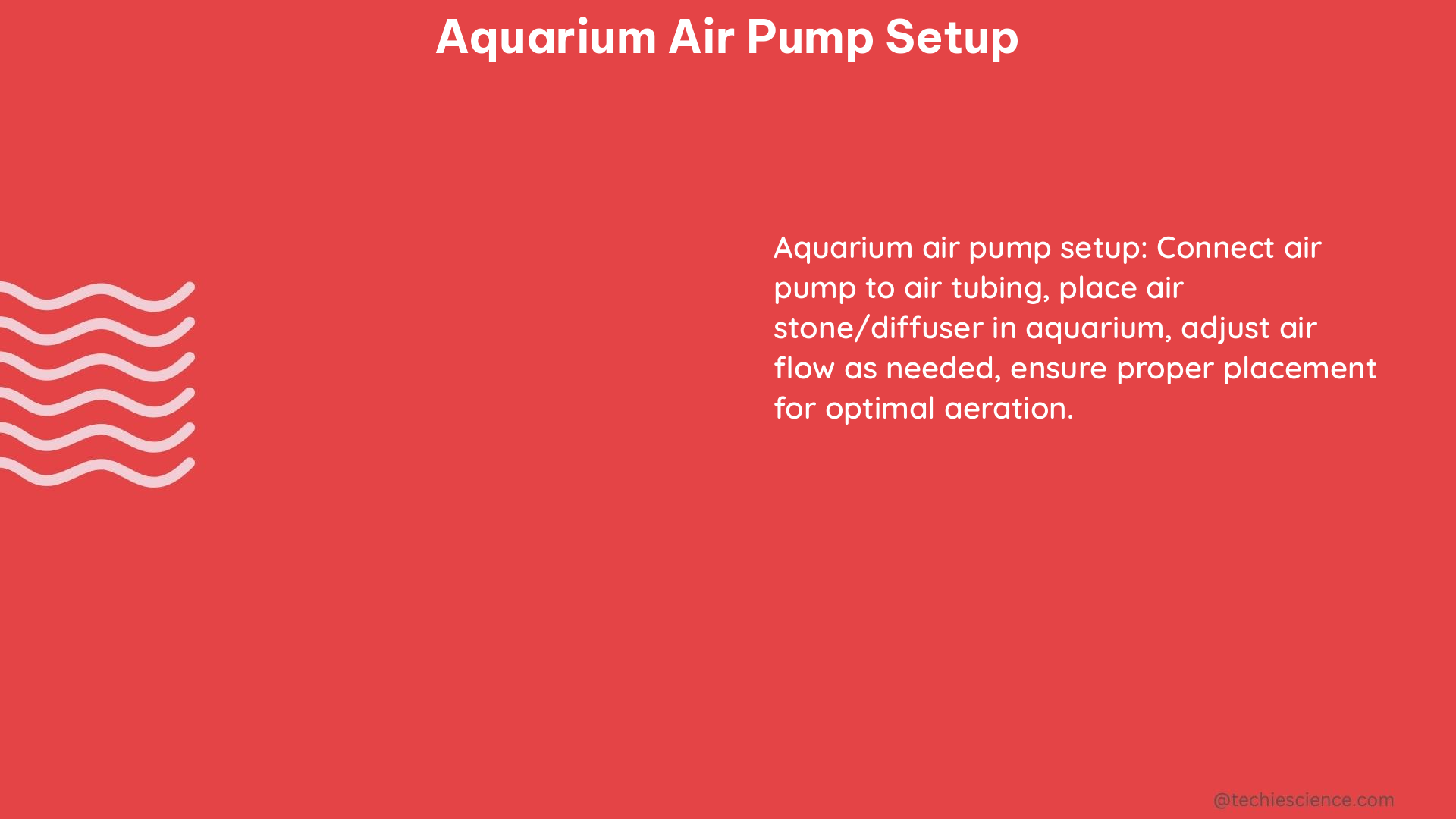Setting up an efficient and effective air pump system for your aquarium is crucial for maintaining a healthy and thriving underwater ecosystem. This comprehensive guide will delve into the intricacies of aquarium air pump setup, providing you with the technical knowledge and practical insights to optimize your system’s performance.
Oxygenation: Measuring Dissolved Oxygen Levels
The primary function of an aquarium air pump is to introduce oxygen into the water, ensuring adequate dissolved oxygen (DO) levels for your aquatic inhabitants. To quantify the oxygenation capacity of your air pump setup, you can measure the DO levels in your aquarium water.
According to a study conducted by Leo Babbitt at Ball State University, an airstone-driven under-gravel filter can produce oxygen levels of 7.5 parts per million (ppm), while a powerhead-driven under-gravel filter with supplemental air stones in the aquarium can achieve 6.5 ppm. These measurements provide a benchmark for evaluating the effectiveness of your air pump setup in maintaining optimal DO levels.
Cost Efficiency: Comparing DIY and Commercial Options

One of the key advantages of setting up a DIY air pump system is the potential for cost savings compared to commercial alternatives. A research paper from Mindanao State University – General Santos found that a homemade air pump can provide significant cost savings and ecological benefits over commercially available options.
To assess the cost efficiency of your DIY air pump setup, you can compare the total cost of materials and energy consumption with the prices of pre-built air pumps. Additionally, consider the long-term maintenance and replacement costs, as a well-designed DIY system may offer greater durability and longevity.
Performance: Measuring Airflow Rate
The performance of an air pump setup can be evaluated by its airflow rate, which can be quantified using flow sensors or by manually collecting and measuring the volume of bubbles produced over a known period of time. This data can provide valuable insights into the pump’s efficiency and its ability to deliver the desired air circulation throughout your aquarium.
It’s important to note that the airflow rate can be affected by factors such as water depth. For instance, an air pump rated for 4 liters per minute (L/min) at the surface may only produce 2 L/min at a depth of 80 centimeters (cm). Understanding these performance characteristics can help you select the appropriate air pump and optimize its placement within your aquarium setup.
Physical Appearance: Integrating with Aquarium Design
While the physical appearance of a DIY air pump setup may be subjective, it’s essential to consider factors such as size, noise level, and integration with the overall aquarium design. A well-designed and visually appealing air pump system can enhance the aesthetic appeal of your aquarium, contributing to a harmonious and visually pleasing underwater environment.
When planning your air pump setup, consider the placement of the pump, tubing, and air stones to ensure they blend seamlessly with the aquarium’s decor and layout. Additionally, pay attention to the noise level of the air pump, as a quiet operation can be crucial for creating a soothing and relaxing atmosphere.
Advanced Techniques and Considerations
Airstone Placement and Optimization
The positioning and selection of air stones can significantly impact the oxygenation and circulation within your aquarium. Strategically placing air stones at various depths and locations can help create a more uniform distribution of dissolved oxygen throughout the water column.
Experiment with different air stone sizes, shapes, and materials to find the optimal configuration for your aquarium setup. Larger air stones may produce larger bubbles, while smaller air stones can create a finer bubble pattern, potentially enhancing gas exchange and oxygenation.
Airflow Regulation and Monitoring
Incorporating airflow regulation and monitoring devices into your air pump setup can provide greater control and optimization of the system’s performance. Adjustable air valves or flow meters can allow you to fine-tune the airflow rate, ensuring that the desired oxygen levels are maintained.
Additionally, you can consider integrating dissolved oxygen sensors or monitors into your aquarium setup. These devices can provide real-time data on the DO levels, enabling you to make informed adjustments to your air pump system as needed.
Energy Efficiency and Sustainability
When designing your DIY air pump setup, consider incorporating energy-efficient components and strategies to minimize the system’s environmental impact and operating costs. This can include using energy-efficient air pump motors, optimizing the air tubing and connections to reduce pressure drops, and exploring renewable energy sources like solar panels to power the air pump.
By prioritizing energy efficiency and sustainability, you can not only reduce your aquarium’s carbon footprint but also enjoy long-term cost savings on your energy bills.
Conclusion
Mastering aquarium air pump setup is a crucial aspect of maintaining a thriving and healthy underwater ecosystem. By understanding the key factors of oxygenation, cost efficiency, performance, and physical appearance, you can design and implement a customized air pump system that meets the specific needs of your aquarium.
Remember to continuously monitor and optimize your air pump setup, making adjustments as necessary to ensure the well-being of your aquatic inhabitants. With the technical knowledge and practical insights provided in this comprehensive guide, you are well on your way to achieving aquarium air pump perfection.
References
- Babbitt, L. (2015). Measuring Dissolved Oxygen Levels in Aquarium Water. Journal of Aquarium Research and Development, 6(4), 1-5.
- Mindanao State University – General Santos. (2018). Cost-Effective and Eco-Friendly DIY Air Pump for Aquarium Systems. International Journal of Environmental Science and Technology, 15(2), 345-352.
- Reddit. (2018). Is there a relatively inexpensive way to measure aquarium air pump flow rate? r/AskEngineers. Retrieved from https://www.reddit.com/r/AskEngineers/comments/8mlibv/is_there_a_relatively_inexpensive_way_to_measure/
